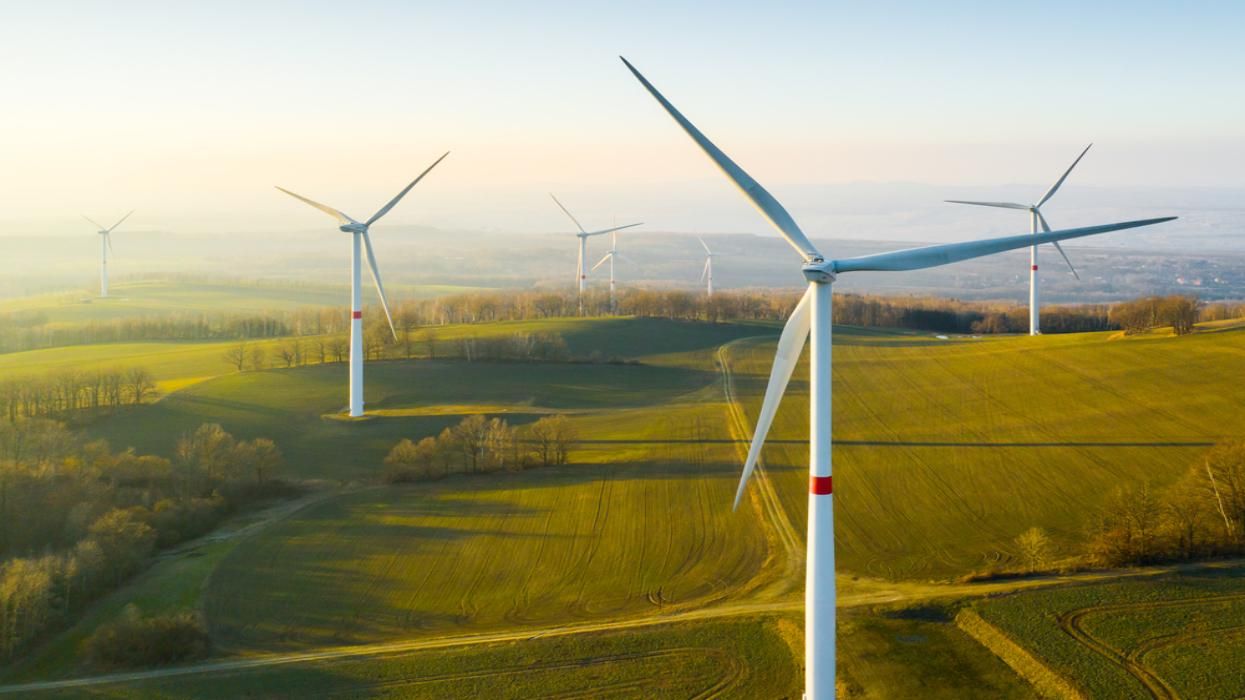A new report from the International Energy Agency found that renewable power capacity will double by 2027, with wind and solar set to overtake coal as the largest energy generation source by 2025.
“Renewables were already expanding quickly, but the global energy crisis has kicked them into an extraordinary new phase of even faster growth as countries seek to capitalize on their energy security benefits," IEA executive director Fatih Birol said in a press release. "The world is set to add as much renewable power in the next 5 years as it did in the previous 20 years."
The expansion of renewable energy has increased rapidly, beyond what the agency predicted just last year. They now project that the industry will expand by 30 percent.
Ever since Russia's invasion of Ukraine, fossil fuel prices have skyrocketed, prompting countries to turn to wind turbines, solar panels, nuclear power plants, hydrogen fuels, electric vehicles, and electric heat pumps. While there has been an increase in fossil fuel consumption due to the war, the IEA said it is likely temporary, as countries are seeking alternative solutions to global energy crises.
The report explains: "The first truly global energy crisis, triggered by Russia’s invasion of Ukraine, has sparked unprecedented momentum for renewables. Fossil fuel supply disruptions have underlined the energy security benefits of domestically generated renewable electricity, leading many countries to strengthen policies supporting renewables."
This past Autumn brought severe weather to the United States, including snowstorms in Buffalo and Hurricane Ian in Florida, which experts said were exacerbated by climate change. Europe also saw one of the hottest summers on record, with the majority of their infrastructure unable to withstand extreme temperatures.
The IEA's report revealed that global infrastructure requires the most improvement in the fight against climate change, with much of the world's buildings unable to withstand severe heating and cooling.
The IEA also credits President Biden's Inflation Reduction Act as a key piece of legislation in combating global warming. Long-term tax credits for solar and wind companies are likely to bring “unforeseen” expansion for the industry, according to the report.
China is also expected to create half of the projected renewable energy developments in the next decade, based on a five-year plan implemented by the government for reducing emissions. Despite this, the country has expanded coal mining and production, as well as increased the amount of coal burned.
However, the IEA found that in the next five years, 90 percent of energy developments will likely be renewable. This will ideally clear the path to curbing emissions, limiting the global temperature increase to 1.5 °C.
Birol continued: "This is a clear example of how the current energy crisis can be a historic turning point towards a cleaner and more secure energy system."
Is coal a renewable energy?
Coal is a nonrenewable resource, meaning it cannot be replaced by natural means at a pace quick enough to keep up with consumption.
Can the world run on 100 percent renewable energy?
Most experts agree that 100 percent renewable energy is technically feasible, though only via the policy to support it.
Which country will use 100 percent renewable energy by 2050?
Germany has promised to transform its electricity supply to 100 percent renewable energy by 2050.
- Shocker, Most Middle Schoolers Learn Next to Nothing About Climate Change ›
- The World Is Failing to Meet Standards of Paris Climate Agreement, UN Says ›
- U.S. Scientists Reach Breakthrough in Nuclear Fusion, an Infinite Source of Clean Energy - Advocate Channel ›
- USPS to Deploy 66,000 Electric Vehicles - Advocate Channel ›
- The World Is Burning More Coal Than Ever, Report Shows ›



















































